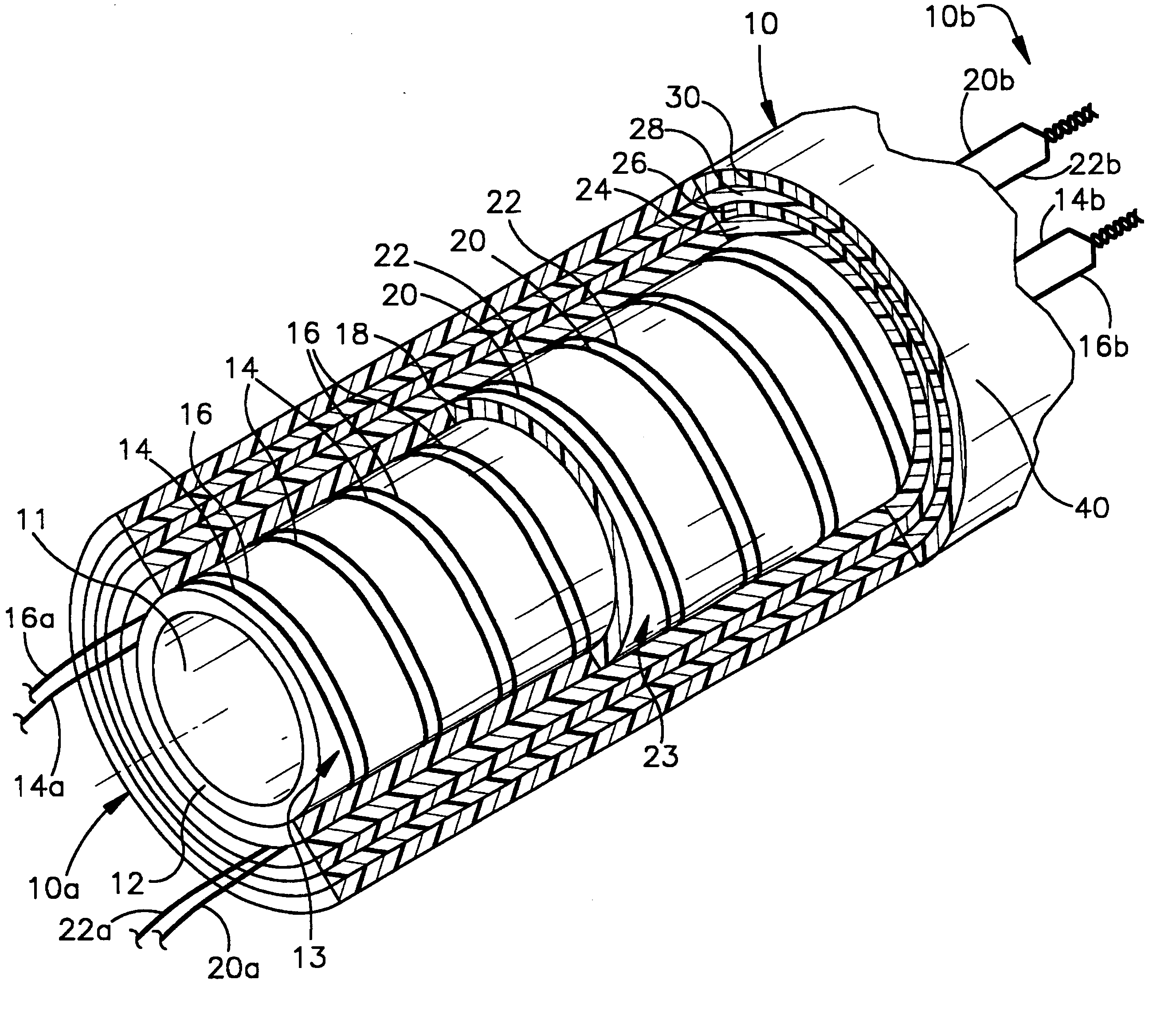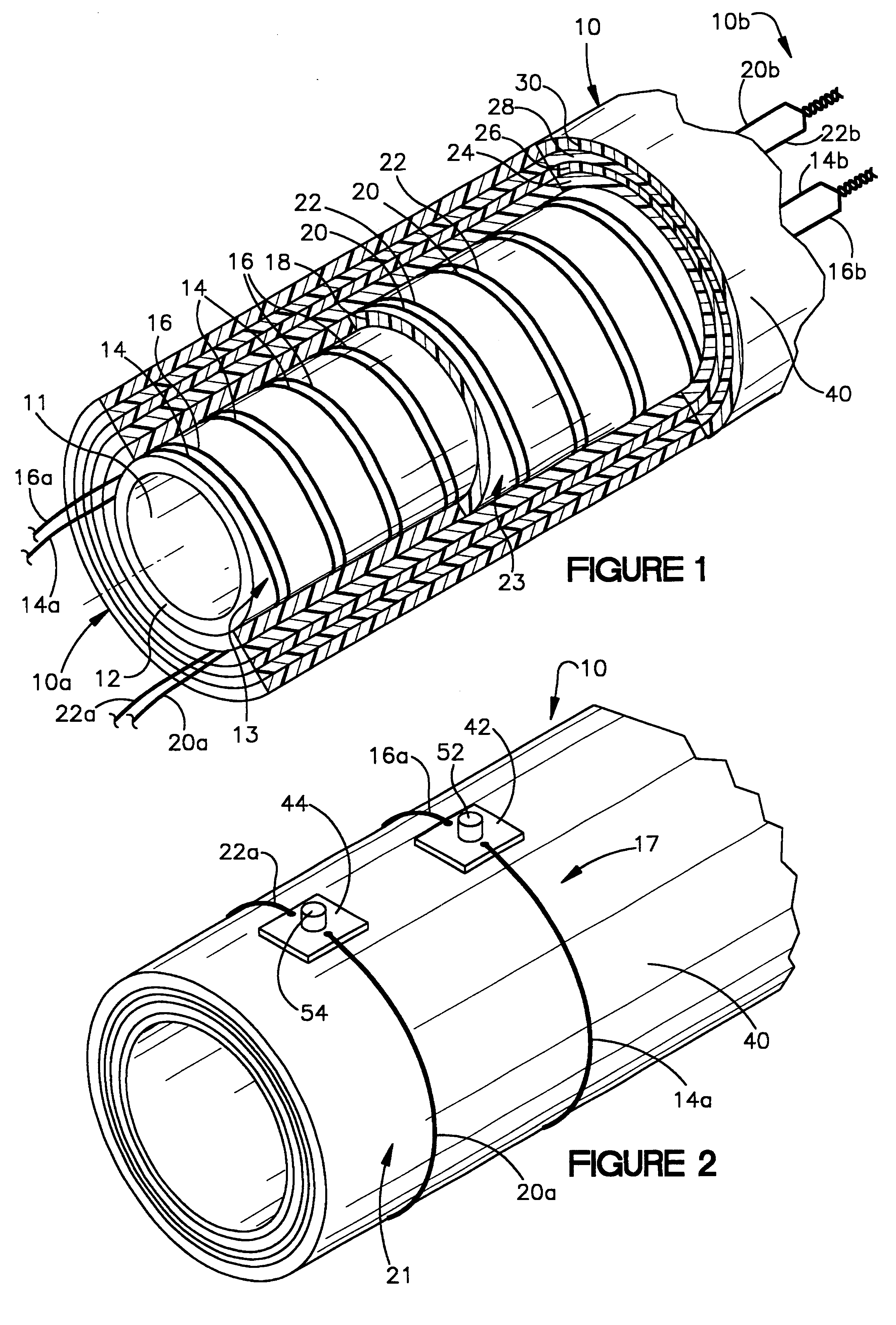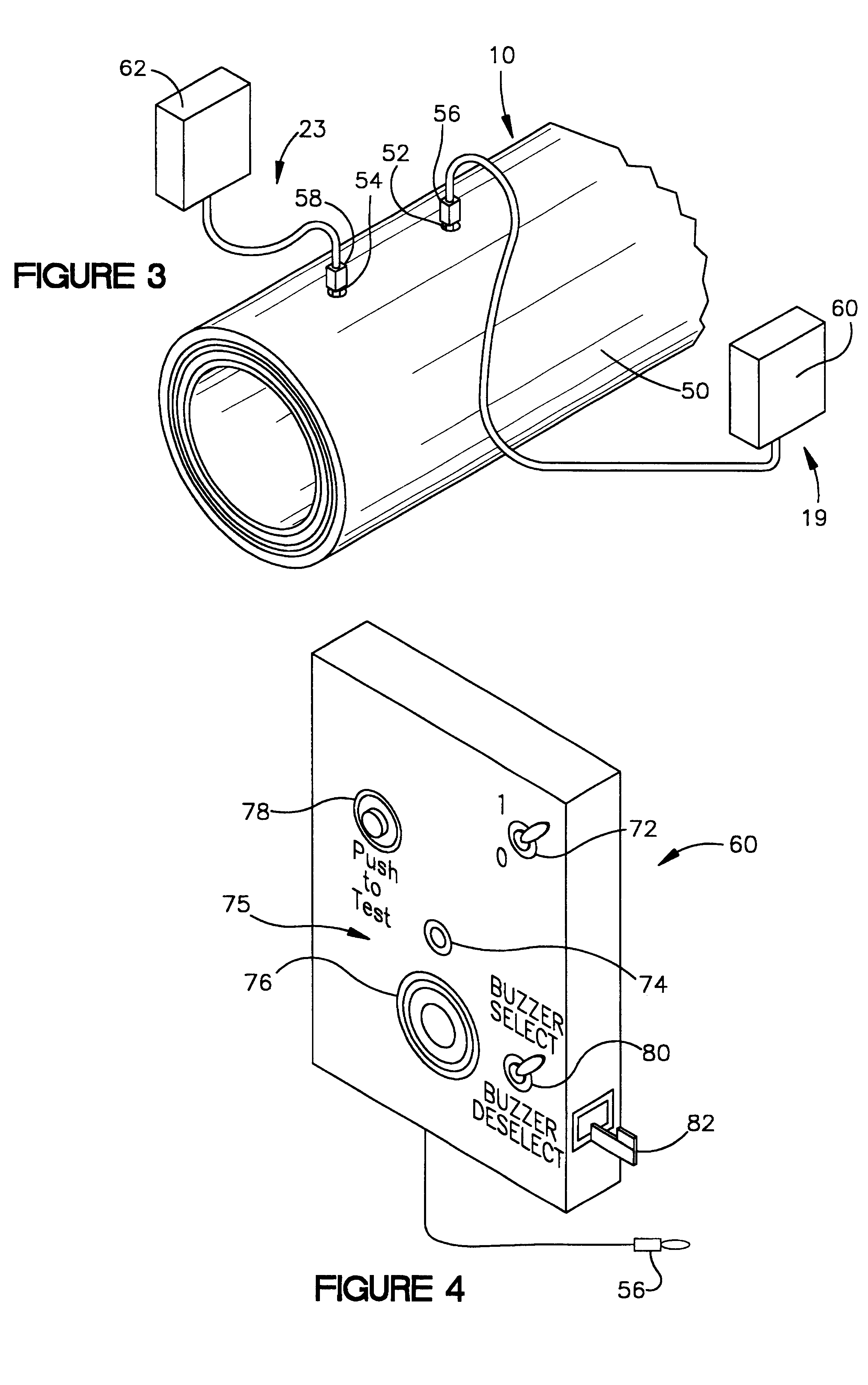Abrasive material transport hose with wear detecting sensors
a technology of wear detection and abrasive material, which is applied in the directions of transportation and packaging, fluid tightness measurement, instruments, etc., can solve the problems of unfavorable and unwanted problems, hoses showing signs of internal wear and needing replacement, and it is not possible to visually inspect the degree of wear. , to achieve the effect of convenient replacemen
- Summary
- Abstract
- Description
- Claims
- Application Information
AI Technical Summary
Benefits of technology
Problems solved by technology
Method used
Image
Examples
Embodiment Construction
FIG. 6 shows a hose 110 constructed in accordance with a second embodiment of the present invention. Over a mandrel (not shown), an inner lining or tube 112 is applied, upon which a sensor wire 114 is spirally wound thereabout. Subsequently, an additional layer of insulating liner or tube 116 is applied, upon which a sensor wire 118 is spirally wound. The free ends 114a, 118a of sensor wires 114,118, respectively, are extended to or even beyond one end of the hose 110 and connect to a first two-pole socket (not shown but comparable to two-pole socket 42) as described hereinbefore. The other free ends 114b, 118b of sensor wires 114,118, respectively, are joined or spliced together to complete a first wear sensing element 119 (sensor wires 114,118 and two-pole socket 42) to detect wear in sensed layer 113. Subsequently, a layer 120 of tube or reinforcement ply is disposed over insulating tube or fabric layer 116. Layer 120 in turn has a single turn of sensor wire 122 spirally wound th...
PUM
 Login to View More
Login to View More Abstract
Description
Claims
Application Information
 Login to View More
Login to View More - R&D
- Intellectual Property
- Life Sciences
- Materials
- Tech Scout
- Unparalleled Data Quality
- Higher Quality Content
- 60% Fewer Hallucinations
Browse by: Latest US Patents, China's latest patents, Technical Efficacy Thesaurus, Application Domain, Technology Topic, Popular Technical Reports.
© 2025 PatSnap. All rights reserved.Legal|Privacy policy|Modern Slavery Act Transparency Statement|Sitemap|About US| Contact US: help@patsnap.com



